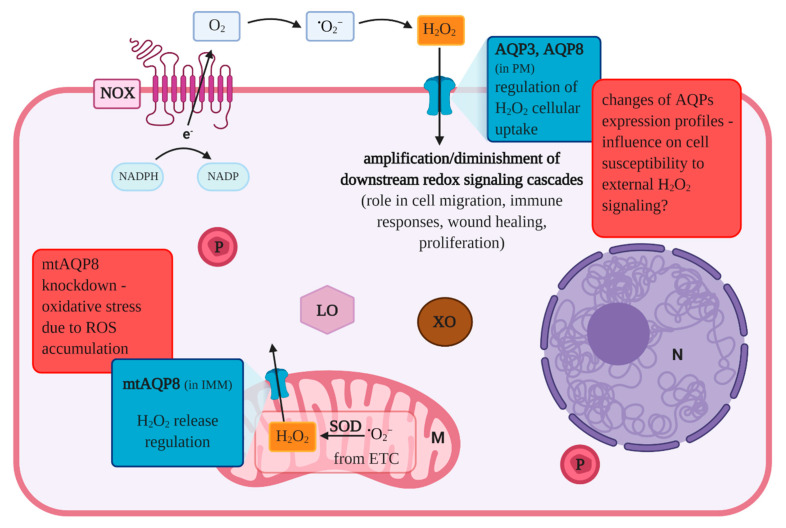Figure 2.
The role of aquaporins in the transport of reactive oxygen species and oxidative metabolism. The main physiological sources of reactive oxygen species include: mitochondria, nicotinamide adenine dinucleotide phosphate oxidase, xanthine oxidase and lipoxygenases. AQP3 and AQP8 belong to the family of aquaporins and can be classified as aquaglyceroporin and orthodox aquaporin, respectively. A growing body of research has demonstrated the involvement of these two membrane channels in mediating hydrogen peroxide cellular uptake, as described in the text. AQP-regulated H2O2 accumulation can amplify or diminish signal transduction pathways in which this molecule serves as a second messenger. As shown in other cell types, AQP3 and AQP8 expression changes influence complex biological processes, such as immune responses, proliferation, wound healing or cell migration. AQP8 was also detected in the inner mitochondrial membrane and its deregulation may be implicated in ROS accumulation which leads to mitochondrial depolarization and a reduction in ATP production. Therefore, aquaporins may play a role in oocyte oxidative metabolism changes observed with aging. Abbreviations: AQP—aquaporin; e—electron; ETC—electron transport chain; IMM—inner mitochondrial membrane; NADPH—dihydronicotinamide adenine dinucleotide phosphate; NADP—nicotinamide adenine dinucleotide phosphate; N—nucleus; M—mitochondrion; P—peroxisome; LO—lipoxygenase; XO—xanthine oxidase NOX—NADPH oxidase; PM—plasma membrane ROS—reactive oxygen species; SOD—superoxide dismutase, (according to [88,98,99,100,101,102,103,104,105,106] and this review).

